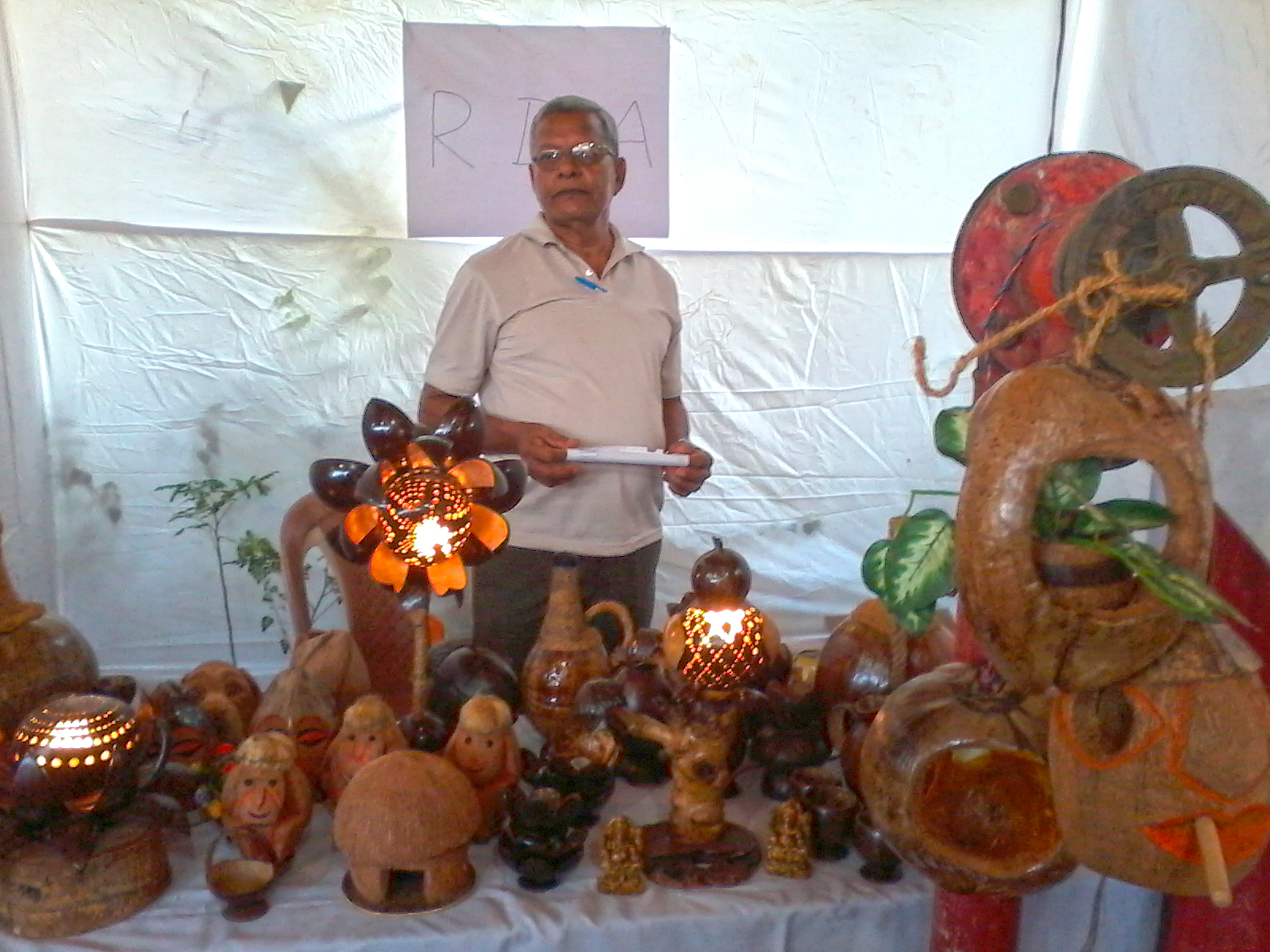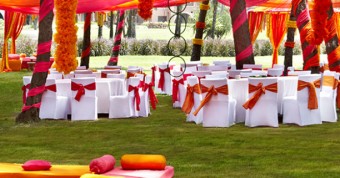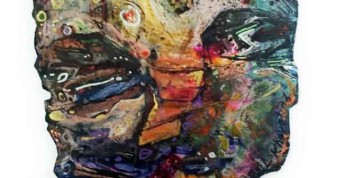Boromeu do Rosario Pereira
An ex-physical education teacher who loves designing art pieces from coconut shells and coir… Dr. Charlane Pereira e Rebello explores the craft of 66-year-old Boromeu do Rosario Pereira.
I recently visited the Agriculture Exhibition held at Ravindra Bhavan in Margao. As I was looking at the various plants and machines, case I came across a stall where a lone gentleman had displayed a variety of coconut art pieces. A beautiful hand-made lampshade … three monkeys … cups … earrings… Then my eyes fell on a set of elegantly carved birds perched on a wooden branch. And I got to talking with the maker of these lovely objets d’art.
Boromeu do Rosario Pereira has worked for 39 years as a physical education teacher at Holy Spirit Institute in Margao, physician teaching many school children the importance of exercise in their lives. He discovered his talent for coconut carving when the Headmaster of Holy Spirit Institute handed him the Work Experience subject at school. Boromeu chose the topic ‘Wealth Out of Waste’ and started teaching the students to carve lovely art pieces from discarded coconut shells.
Though many might regard coconut shells and coir to be of no use, Boromeu’s eyes and hands don’t see it that way. “There is no one type of item that I work on,” he says. “Whatever comes to my mind inspires me to create art. Many people have appreciated my work. I have been asked to display this artwork at this three-day exhibition. I also show my artwork at handicrafts exhibitions every year.”
Boromeu has been carving up coconuts for ten years now. He gathers the nuts from his property and uses a specially designed machine to cut the coconut shells. He points out to a round shaped coconut bottle, “I got this huge coconut from someone residing in Velim.”
“It is easy to get coconuts,” he goes on. “The raw material for my artwork is easily available. I taught this to my students in their work experience classes. Besides, the waterless coconuts are not taken by people. I ensure these shells are not wasted.”
Having no formal training, it is amazing to watch Boromeu work effortlessly to carve such beautiful pieces. He comments, “It all depends on what item I am working on. The lamp shade took the longest. It took me six days to work on it. But coconut cups are much easier and take just about 30 minutes. Each time I work on a new design. Only a few times have I repeated the same items. I have lost count of how many items I have created. Lots and lots…”
“Although I have not undergone any type of training, I conduct classes for youth so that they too may learn something worthwhile,” says Boromeu. “Most of these classes have been held outside Goa. I also got a chance to train the staff at Sada jail for a month.”
Irrespective of the raging controversy of coconut palms being recently reclassified as not being trees, the uses of the coconut tree are manifold, as Boromeu has shown. The trunk can be used for timber, the palm leaves for thatching huts, and the coconut itself for nourishment of the body as well as the soul—in the form of beautiful works of art.




